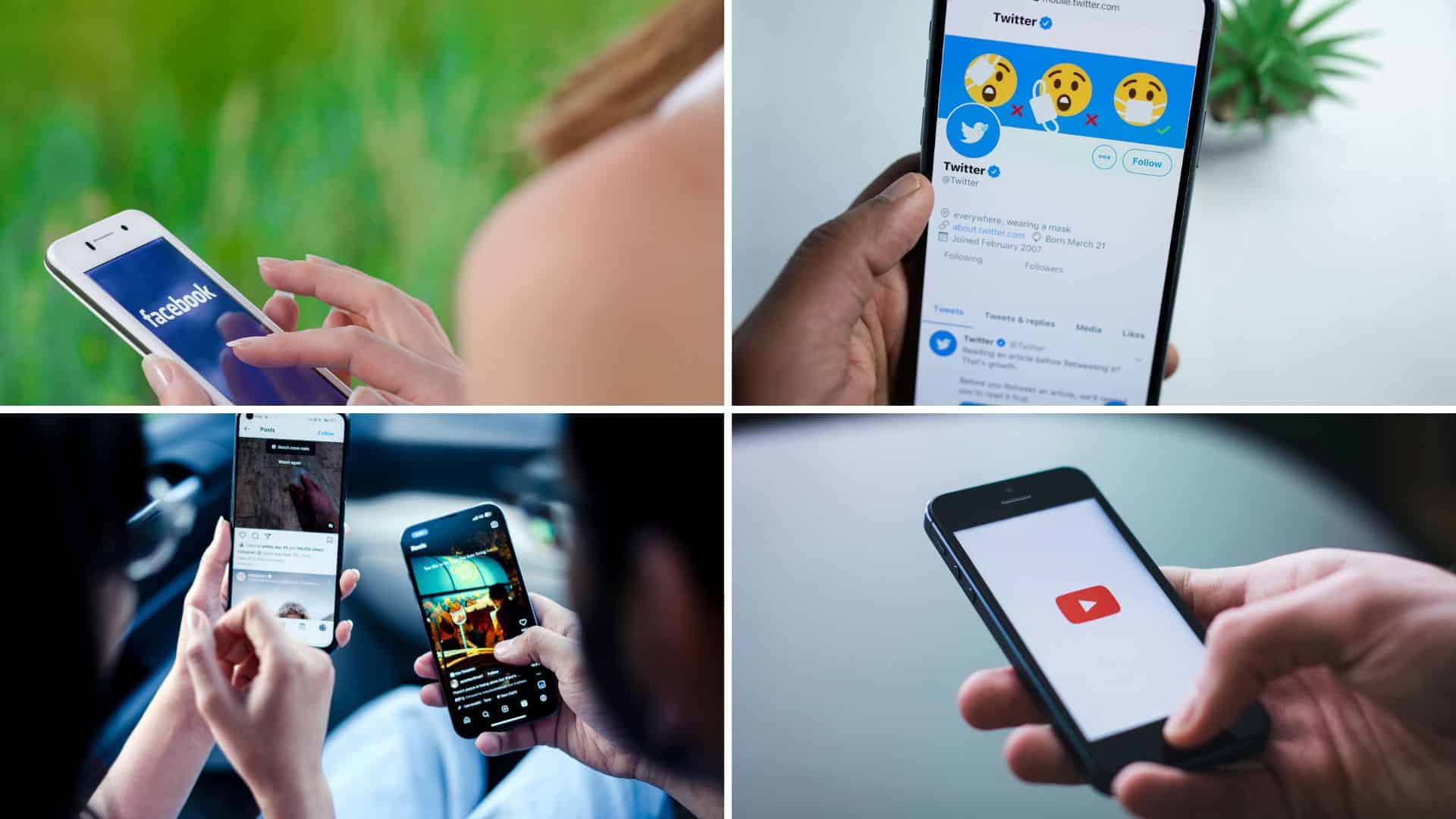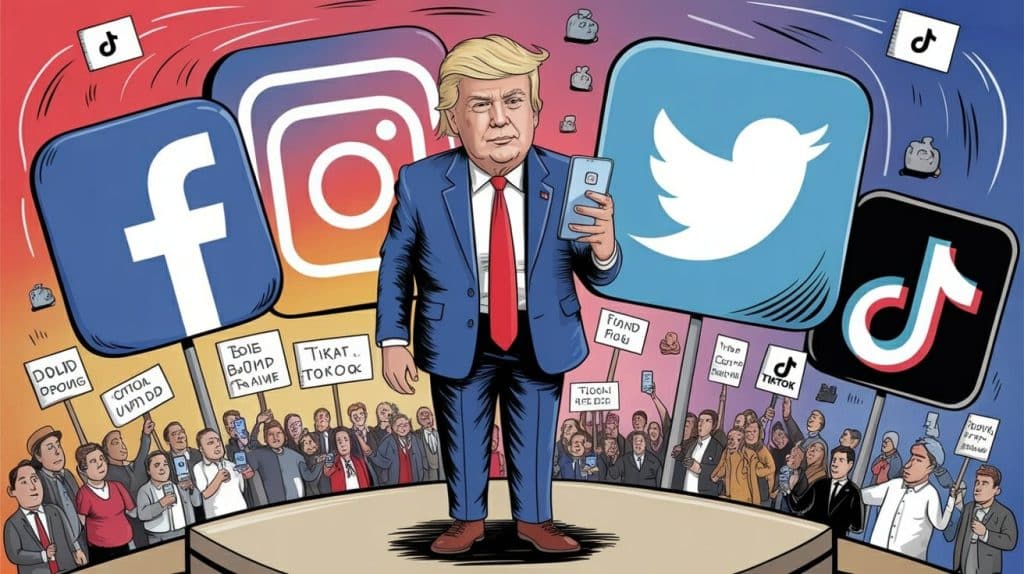Do you think a single viral tweet can change the outcome of a presidential election?
Social media has completely reshaped American political campaigns, transforming how politicians connect with voters and run for office.
What began as a simple social networking platform has evolved into one of the most powerful tools in modern politics.
Politicians now reach millions of voters instantly without traditional media gatekeepers. Young voters, in particular, rely heavily on social platforms for political news and candidate information.
In this blog, I’ll show you exactly how social media changed US political campaigns and what challenges this creates for American democracy.
How Social Media Changed Political Campaigning?
Political campaigns have undergone a complete transformation with the advent of digital platforms. Previously, candidates depended on television ads, radio spots, and newspapers to reach voters nationwide.
Social media created direct communication between politicians and citizens. Obama’s campaign demonstrated this power by building online communities and raising massive funds digitally.
Key changes include:
- Unfiltered updates let candidates craft their own narrative directly for voters.
- Cost-effective advertising versus expensive television commercial slots.
- Real-time responses to breaking news and political controversies.
- Viral content reaching millions without any paid promotion costs.
- Grassroots organizing through online volunteer networks and supporter groups.
This shift helped outsider candidates compete more effectively against established politicians. However, it created new challenges around message control and information accuracy.
Major Platforms Politicians Use to Connect with Voters

Different social media platforms serve distinct purposes in modern political campaigns, allowing for targeted messaging strategies that reach specific voter demographics.
1. Facebook
Facebook remains essential for reaching older voters who participate reliably in elections. Campaign teams use detailed targeting tools to show specific advertisements.
Politicians create voter profiles based on location, interests, and demographics. They can target suburban women, young minorities, or rural conservatives with personalized messages.
2. Twitter (Now X)
Twitter is best suited for breaking news, quick responses, and generating media attention. Politicians share policy positions, attack opponents, and react to current events instantly.
Journalists closely follow political Twitter, making it essential for shaping their news coverage. However, Twitter’s user base skews younger and more politically engaged overall.
3. Instagram
Instagram appeals to younger voters through visual storytelling and behind-the-scenes content. Candidates frequently post photos from campaign stops, family gatherings, and policy discussions.
Instagram Stories create a sense of urgency with their disappearing content. This feature keeps followers checking back regularly for quick updates and exclusive campaign moments.
4. YouTube
YouTube hosts longer-form content, such as policy speeches, debate clips, and campaign documentaries. Many politicians start their own channels to bypass traditional media gatekeepers entirely.
They use the platform to build personal brands, combining policy detail with storytelling. This platform allows detailed policy explanations and unfiltered candidate messaging.
Impact of Social Media on Voter Engagement
Social media changed voter participation from passive information consumption to active digital involvement, creating new pathways for political engagement and community building.
| Aspect | Before Social Media | After Social Media |
|---|---|---|
| Information Source | TV news, newspapers, and radio broadcasts | Social feeds, real-time updates, peer sharing |
| Candidate Access | Scheduled rallies, town halls only | Direct messages, live streams, comments |
| Political Discussion | Face-to-face with family, friends | Online communities, viral conversations |
| Campaign Participation | Physical volunteering, phone calls | Digital organizing, online fundraising |
| Feedback to Politicians | Letters, formal meetings | Instant reactions, comments, shares |
| News Consumption | Scheduled broadcasts, daily papers | 24/7 updates, breaking news alerts |
| Voter Mobilization | Door-to-door, phone trees | Viral campaigns, targeted messaging |
| Political Education | Formal debates, pamphlets | Interactive content, fact-checking tools |
This digital changeover has increased political engagement among younger demographics, while also creating new challenges, including misinformation and political polarization, in online spaces.
How Social Media Shapes Public Opinion?

Social media platforms have a significant influence on how Americans form political opinions and make voting decisions, largely through algorithmic content delivery and peer interactions.
Key influence mechanisms:
- Echo chambers reinforce existing beliefs by repeatedly showcasing similar viewpoints.
- Algorithm-driven sharing ensures rapid message spread across vast online networks.
- Influencer endorsements sway followers through trusted personal recommendations.
- Algorithm targeting shows specific political content based on user behavior patterns.
- Peer pressure through visible likes, shares, and comments on political posts.
- Emotional appeals in videos and images create stronger opinion formation than text.
These mechanisms create powerful tools for political persuasion but also raise concerns about manipulation, misinformation, and the quality of democratic discourse in digital spaces.
Digital Campaign Communication Challenges
Social media’s political role presents both significant benefits and problems, raising concerns about the integrity of democracy and fair electoral processes.
- Misinformation Crisis: Fact-checking struggles to keep pace with the volume of misleading claims that dominate online conversations.
- Foreign Election Interference: Fake accounts and coordinated campaigns from hostile nations designed to influence American elections and increase social divisions.
- Voter Privacy Violations: Campaigns collect detailed personal data about voters without obtaining clear consent, ensuring transparency, or implementing proper security measures.
- Content Moderation Debates: Platform decisions face criticism from both sides of the political spectrum regarding the balance between censorship and allowing harmful, false information to remain online.
- Digital Access Inequality: Voters without internet access or digital literacy are excluded from important political conversations and essential election information.
- Echo Chamber Polarization: Algorithms create isolated information bubbles that reduce exposure to different viewpoints and increase political divisions nationwide.
Wrapping It Up
In summary, social media has fundamentally changed American political campaigns from traditional one-way communication to interactive digital democracy.
Politicians now have unprecedented direct access to voters, enabling real-time engagement and cost-effective targeted messaging that was impossible through conventional media channels.
This conversion brought both remarkable opportunities and serious risks. Digital platforms enhanced voter participation and campaign accessibility for newcomers.
Yet these platforms also fueled ethical dilemmas around truth, voter data use, and the deepening divide in political culture.
The political communication landscape will continue to evolve as technology advances and regulations adapt to strike a balance between innovation and protecting electoral integrity.
What role should social media platforms play in regulating political content while preserving free speech?





































